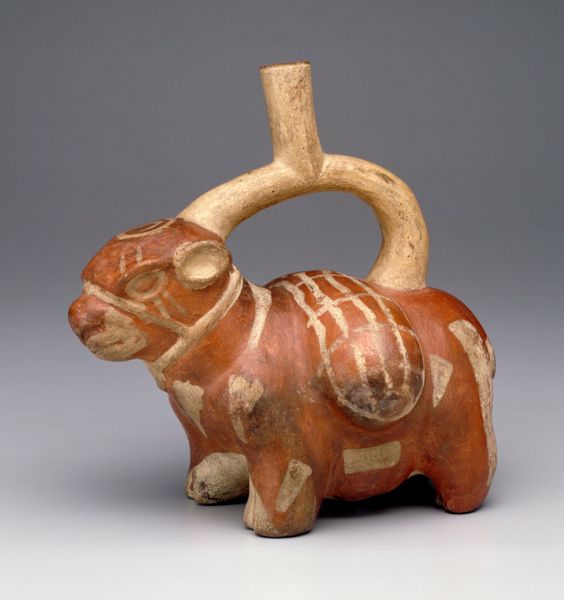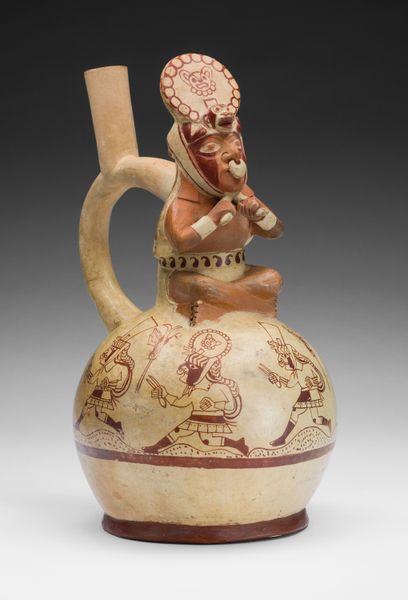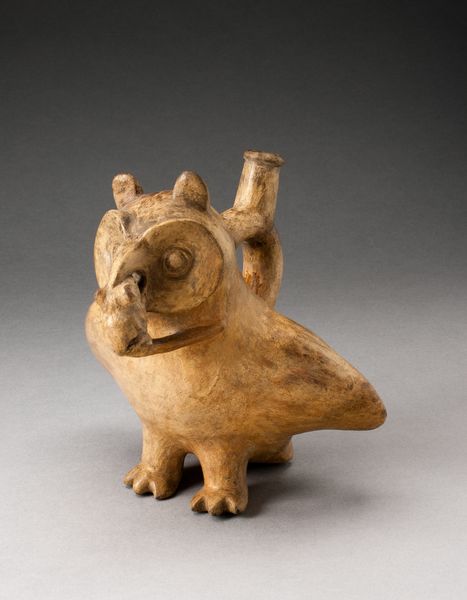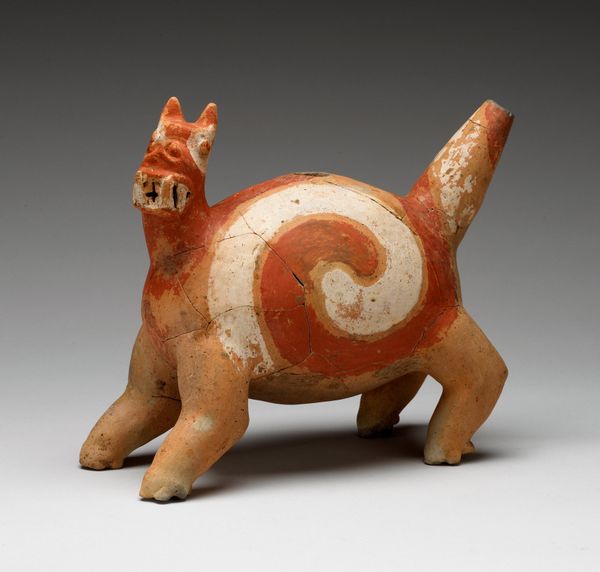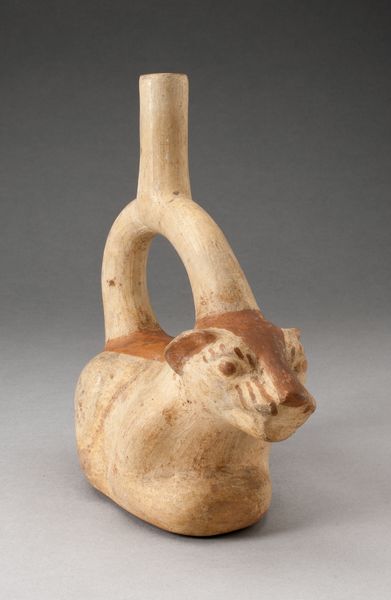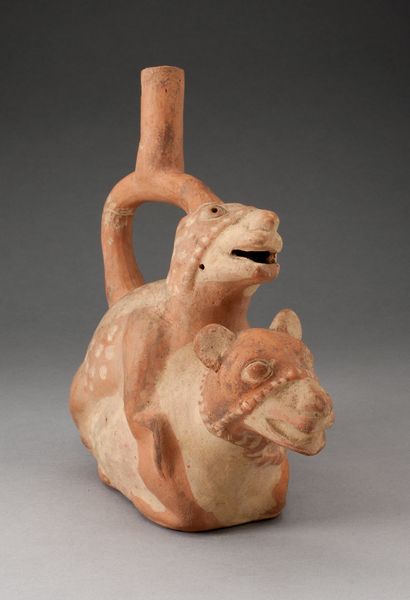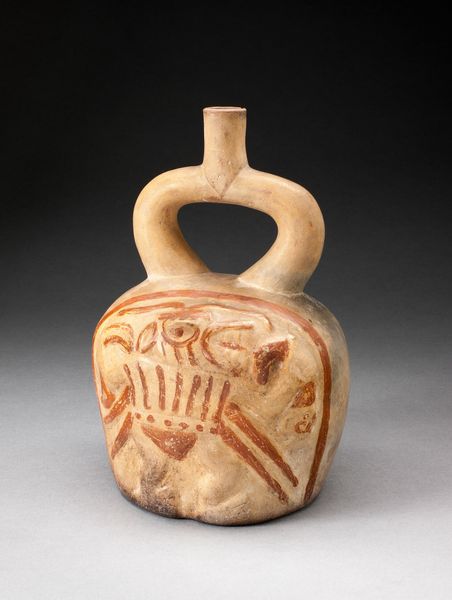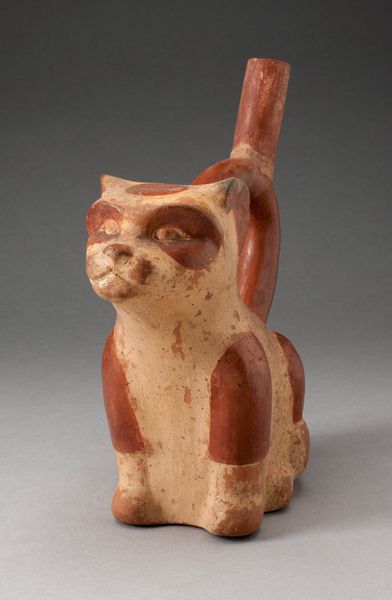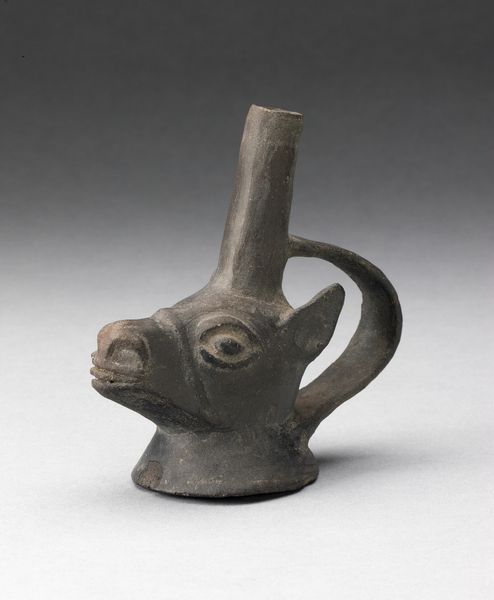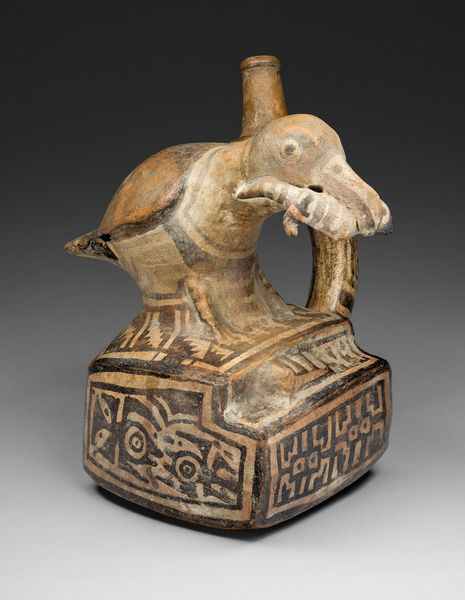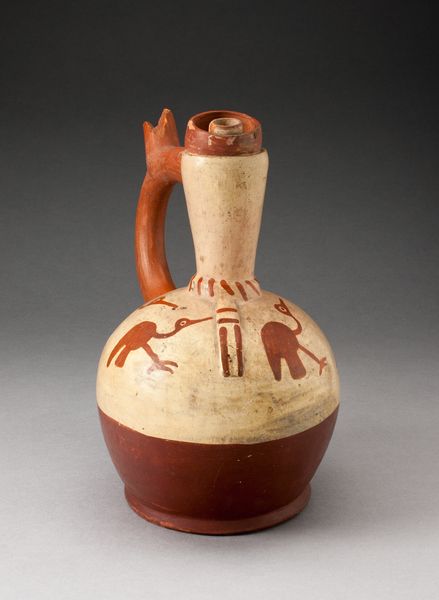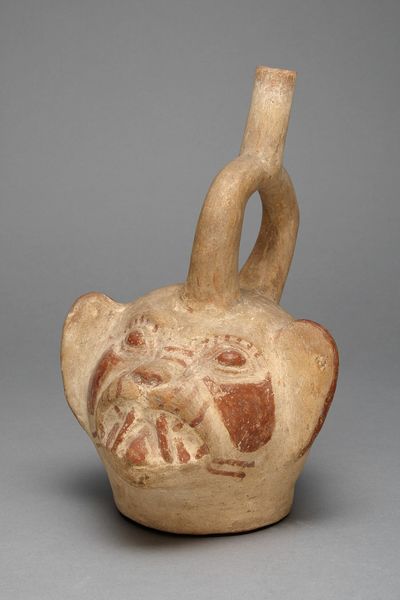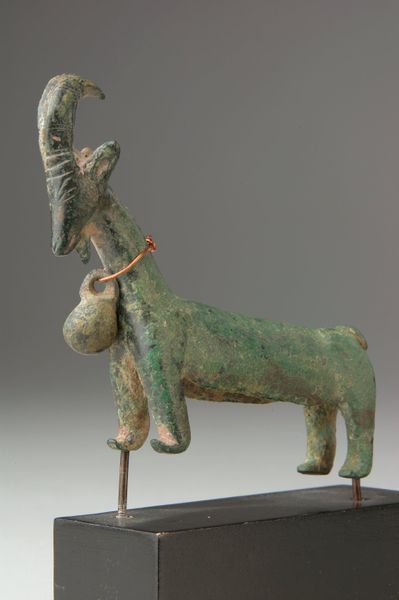
ceramic, terracotta
#
ceramic
#
figuration
#
ceramic
#
terracotta
#
indigenous-americas
Dimensions: 27 × 21.3 cm (10 5/8 × 8 3/8 in.)
Copyright: Public Domain
Editor: This is a ceramic vessel, created by the Moche people sometime between 100 and 500 CE. It’s called "Vessel in the Form of a Deer Impersonator," and it's so intriguing. The posture, the markings... what's your take on this piece? Curator: Look closely at how this ceramic piece collapses distinctions, quite literally, between human and animal. It raises questions about Moche society and ritual. This wasn't just about mimicking; it's about transforming through materiality. Editor: Transforming how? Was it meant to actually be used in rituals? Curator: Precisely. Imagine the labor invested, from extracting the clay to firing it perfectly. And consider the controlled environment needed for these firings to even work! The form references not just the *idea* of a deer, but the physical reality of the animal within the cultural consciousness of the Moche. The vessel likely held liquids, maybe even blood. Editor: Blood? That makes it more… visceral. And ritualistic, as you said. Is there a hierarchical message too? A ceramic work mimicking organic life? Curator: That's key, challenging traditional notions of high and low art forms by focusing on both labor and the symbolism attached to this ceramic work. The level of craft itself communicates status and expertise. What’s important isn't some inherent *essence* of deer-ness, but how this object, through the controlled firing of earth and application of pigment, was imbued with cultural power. Editor: So, it's about material processes conferring status and power to the object, and likely, the person using it in ceremonies? Curator: Exactly. Through manipulation of earthly materials—clay, pigment, fire—status, spirituality, and a form of material transubstantiation, emerge. Editor: That definitely reshapes my view! It's fascinating to consider art less as representation, and more as…social production, shaped by materiality and labor. Curator: Absolutely. Hopefully you'll start questioning how we continue to ascribe "value" to art via materials and processes today!
Comments
No comments
Be the first to comment and join the conversation on the ultimate creative platform.
